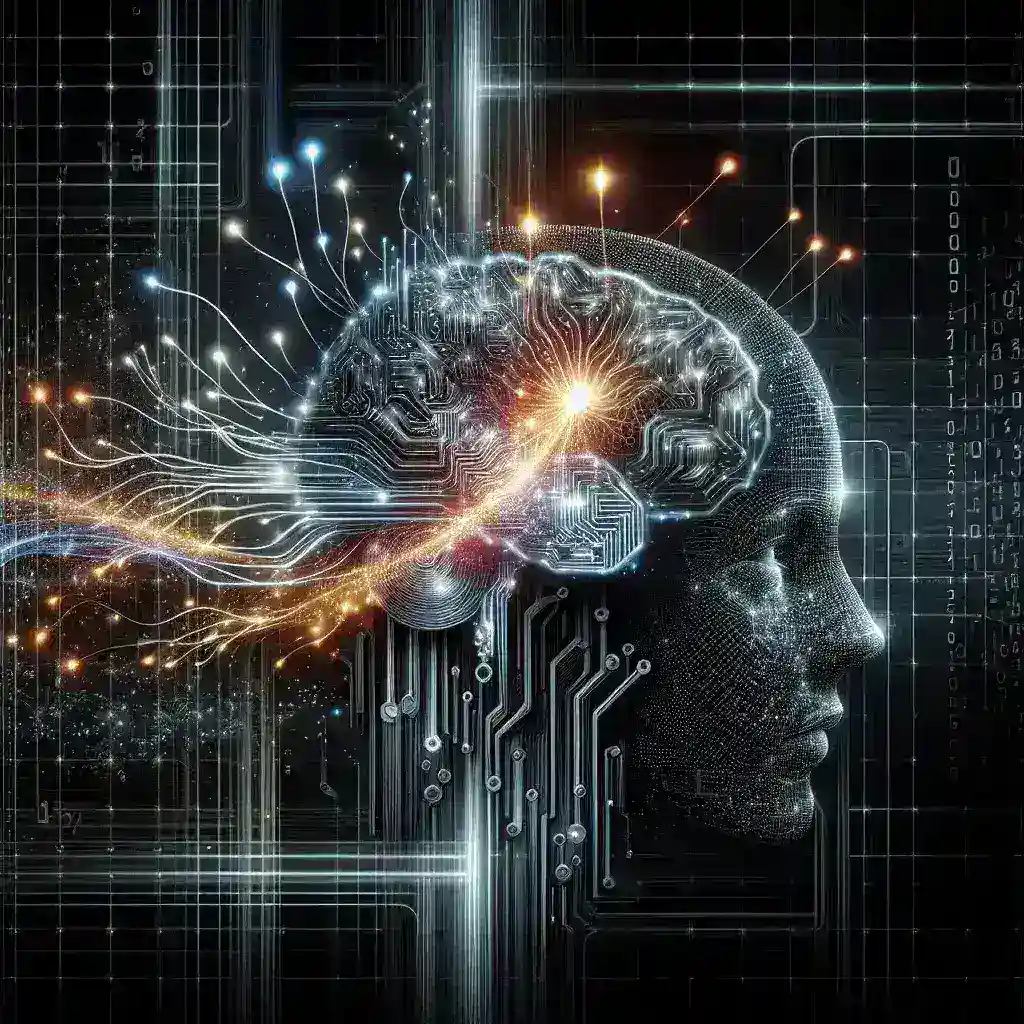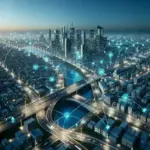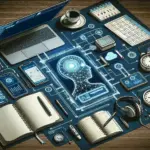The Revolutionary Intersection of Artificial Intelligence and Human Creativity
In an era where technological advancement seems to accelerate at breakneck speed, one of the most fascinating developments has been the emergence of artificial intelligence as a creative partner rather than a replacement for human imagination. The concept of using AI to enhance creativity has shifted from science fiction to practical reality, fundamentally altering how we approach artistic expression, problem-solving, and innovation across multiple industries.
The relationship between artificial intelligence and creativity represents a paradigm shift that challenges traditional notions of what it means to be creative. Rather than viewing AI as a threat to human artistic expression, forward-thinking creators, businesses, and researchers are discovering unprecedented opportunities to amplify their creative potential through intelligent collaboration with machines.
Understanding AI-Enhanced Creativity: Beyond Traditional Boundaries
Artificial intelligence for creativity enhancement operates on several sophisticated levels, each designed to augment different aspects of the creative process. At its core, AI creativity tools leverage machine learning algorithms, natural language processing, and neural networks to analyze vast datasets of creative works, identify patterns, and generate novel combinations that can inspire or directly contribute to creative projects.
The most compelling aspect of AI-enhanced creativity lies not in replacing human imagination but in expanding the boundaries of what’s possible. These systems can process and synthesize information at scales impossible for human minds, offering fresh perspectives, unexpected connections, and innovative solutions that might never have emerged through traditional creative processes alone.
Machine Learning and Pattern Recognition in Creative Applications
Modern AI systems excel at recognizing complex patterns within creative works, whether analyzing the brushstrokes of master painters, the compositional structures of symphonies, or the narrative patterns in bestselling novels. This pattern recognition capability enables AI to suggest creative directions, identify gaps in existing work, and propose novel combinations of elements that maintain aesthetic coherence while pushing creative boundaries.
Transformative Applications Across Creative Industries
Visual Arts and Design Revolution
The visual arts have experienced perhaps the most dramatic transformation through AI integration. Generative AI tools like DALL-E, Midjourney, and Stable Diffusion have democratized visual creation, enabling individuals without traditional artistic training to produce sophisticated imagery through text prompts. Professional artists are incorporating these tools into their workflows, using AI-generated concepts as starting points for more complex works or as collaborative partners in exploring new aesthetic territories.
Graphic designers are leveraging AI to automate repetitive tasks, generate multiple design variations rapidly, and explore color palettes and compositions that might not have occurred to them organically. The technology has proven particularly valuable in commercial design contexts, where the ability to generate numerous concept variations quickly can significantly accelerate the creative development process.
Music Composition and Audio Innovation
The music industry has embraced AI creativity tools with remarkable enthusiasm. Composers are using AI systems to generate melodic ideas, create backing tracks, and even compose entire pieces in specific styles or genres. These tools analyze musical structures, harmonic progressions, and rhythmic patterns to create original compositions that can serve as inspiration or foundation for human musicians.
Beyond composition, AI is revolutionizing audio production through intelligent mixing, mastering, and sound design capabilities. Musicians can now access sophisticated production techniques that were previously available only to professionals with expensive equipment and years of training.
Writing and Content Creation Enhancement
The writing industry has witnessed a dramatic transformation through AI-powered tools that assist with everything from brainstorming and outlining to editing and style refinement. AI writing assistants can help authors overcome writer’s block, suggest plot developments, create character backgrounds, and even generate entire sections of text that writers can then refine and personalize.
Content creators in marketing, journalism, and digital media are using AI to generate ideas, create first drafts, and optimize content for specific audiences and platforms. These tools have proven particularly valuable for scaling content production while maintaining quality and consistency across large volumes of material.
The Science Behind AI Creativity Enhancement
Neural Networks and Deep Learning Applications
The foundation of AI creativity tools rests on sophisticated neural network architectures that can learn complex relationships within creative datasets. Generative Adversarial Networks (GANs) have proven particularly effective for visual creation, employing two competing neural networks that continuously improve each other’s performance through adversarial training.
Transformer models, which power many text-generation AI systems, utilize attention mechanisms to understand context and relationships within language, enabling them to generate coherent and contextually appropriate creative content. These models can maintain consistency across long-form creative works while introducing novel elements that enhance rather than disrupt the creative flow.
Training Data and Creative Learning
The effectiveness of AI creativity tools depends heavily on the quality and diversity of their training data. The most successful systems are trained on vast collections of high-quality creative works, enabling them to understand and replicate sophisticated creative patterns while generating novel variations.
However, this reliance on training data also raises important questions about originality, copyright, and the ethical use of existing creative works. The creative community continues to grapple with these challenges while working to establish best practices for AI training that respect creators’ rights while enabling technological advancement.
Practical Benefits and Real-World Impact
Democratization of Creative Tools
One of the most significant impacts of AI creativity enhancement has been the democratization of sophisticated creative capabilities. Individuals who previously lacked access to expensive software, training, or natural artistic ability can now create professional-quality content using AI-powered tools. This democratization has led to an explosion of creative content across all media types and has opened new opportunities for entrepreneurship and self-expression.
Efficiency and Productivity Gains
Professional creators are experiencing dramatic improvements in productivity through AI assistance. Tasks that previously required hours or days can often be completed in minutes, allowing creators to focus on higher-level creative decisions and refinement rather than time-consuming technical execution.
The ability to rapidly generate and iterate on creative concepts has fundamentally changed the creative development process, enabling more experimental approaches and reducing the risk associated with exploring unconventional ideas.
Enhanced Collaboration and Inspiration
AI creativity tools serve as tireless creative partners that can provide inspiration, suggest alternatives, and help creators break through creative blocks. Many users report that working with AI has expanded their creative horizons and introduced them to techniques, styles, and approaches they might never have discovered independently.
Addressing Challenges and Limitations
Quality Control and Creative Authenticity
While AI-generated content can be impressive, it often requires human oversight and refinement to achieve the highest quality standards. The challenge lies in maintaining creative authenticity while leveraging AI capabilities effectively. Many creators are developing hybrid workflows that combine AI efficiency with human judgment and refinement.
Ethical Considerations and Copyright Issues
The creative community continues to navigate complex ethical questions surrounding AI creativity tools. Issues of copyright infringement, fair use of training data, and the attribution of AI-assisted creative works remain active areas of legal and ethical debate.
Responsible AI development requires careful consideration of these issues, with many companies implementing policies to address creator concerns and ensure ethical use of AI technologies in creative applications.
Technical Limitations and User Education
Current AI creativity tools, while powerful, still have significant limitations in understanding context, maintaining consistency across complex projects, and generating truly original concepts without human guidance. Users must develop skills in prompt engineering, output evaluation, and creative direction to use these tools effectively.
Future Prospects and Emerging Trends
Advanced AI Models and Capabilities
The rapid pace of AI development suggests that future creativity tools will be even more sophisticated, with improved understanding of context, better integration across different media types, and more intuitive user interfaces. Emerging technologies like multimodal AI systems that can work across text, image, audio, and video simultaneously promise to create even more powerful creative assistance tools.
Integration with Virtual and Augmented Reality
The convergence of AI creativity tools with virtual and augmented reality technologies is opening new frontiers for immersive creative experiences. Creators will soon be able to design and build virtual worlds, interactive experiences, and immersive narratives with AI assistance, potentially revolutionizing entertainment, education, and communication.
Personalized Creative AI Assistants
Future AI creativity tools are likely to become increasingly personalized, learning individual creators’ styles, preferences, and working methods to provide more targeted and effective assistance. These personalized systems could serve as long-term creative partners that grow and evolve alongside their human collaborators.
Best Practices for Implementing AI in Creative Workflows
Starting Small and Scaling Gradually
Creators new to AI tools should begin with simple applications and gradually expand their use as they become more comfortable with the technology. Starting with tasks like brainstorming, concept generation, or basic editing can help build confidence and understanding before moving to more complex applications.
Maintaining Human Creative Control
The most successful AI-enhanced creative workflows maintain human oversight and decision-making at all critical points. AI should augment rather than replace human creativity, serving as a powerful tool that enhances rather than diminishes the creator’s role in the creative process.
Continuous Learning and Adaptation
The rapidly evolving nature of AI technology requires creators to stay informed about new developments, tools, and best practices. Regular experimentation with new AI capabilities and techniques can help creators stay at the forefront of AI-enhanced creativity.
Conclusion: Embracing the Future of Human-AI Creative Collaboration
The integration of artificial intelligence into creative processes represents one of the most exciting developments in modern technology. Rather than threatening human creativity, AI tools are proving to be powerful amplifiers of human imagination, enabling creators to explore new possibilities, work more efficiently, and push the boundaries of what’s possible in their respective fields.
As we move forward, the most successful creators will be those who learn to work effectively with AI as a creative partner, leveraging its capabilities while maintaining their unique human perspective and creative vision. The future of creativity lies not in competition between humans and machines, but in collaboration that combines the best of both artificial and human intelligence.
The journey of AI-enhanced creativity is just beginning, and the possibilities for innovation, expression, and human advancement through this partnership are virtually limitless. By embracing these tools thoughtfully and responsibly, creators can unlock new levels of creative potential and contribute to a future where technology serves to amplify rather than replace human imagination and artistic expression.




Leave a Reply